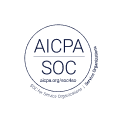
Friction to flow: lessons from the Total Economic Impact™ study

Every digital team is chasing the same goal: deliver better experiences faster. But there’s one challenge that consistently gets in the way. Most teams know what users did — but not why.
In the rush to launch, many organizations rely solely on analytics dashboards. But the problem is; analytics only show drop-offs, rage clicks, or abandoned carts. The true gap in usability often remains hidden until it’s too late.
The Total Economic Impact™ Of UserTesting, a commissioned study conducted by Forrester Consulting on behalf of UserTesting, August 2025, explored how leading organizations moved from reactive fixes to proactive validation by integrating human insight into every stage of the development process with UserTesting.
The study assessed the ROI that a composite organization can achieve with UserTesting’s qualitative and quantitative customer insights platform, allowing readers to understand UserTesting’s potential financial impact.
Here’s what the study found.
Before: when research friction slowed everything down
Before UserTesting, for many organizations, market research was slow, siloed, or only used as a final checkpoint. This meant that key issues surrounding customer journeys surfaced too late.
- Long rework cycles: Teams often discovered usability issues only after product launch, requiring expensive fixes. Before integrating human insight earlier in the process, teams required more revision cycles to reach acceptable usability standards.
- Blind spots in analytics: Quantitative data revealed what happened, but not why users struggled. Many organizations described how the lack of product validation and pre-launch testing led to user confusion and emergency fixes after release, leading to costly expenses.
- Siloed decisions: Product, design, and research teams lacked a shared view of the customer, slowing iteration and innovation. Many organizations lacked a centralized solution for gathering and analyzing CX research, one that could be accessible to all teams. Because of this, decisions are often debated internally instead of being guided by actual user evidence.
- Impact: Delays in product releases, lower conversion rates, and missed opportunities to retain customers. Before adopting early user validation, organizations struggled to identify and launch improvements based on real customer feedback. Past research efforts were slow and ineffective, hindered by limited tools and a lack of scalable processes.
After: turning insight into flow
When teams built human insight directly into their design process, momentum shifted.
- Faster, confident releases: For the composite organization, customer feedback and user behavioral research early in design helped teams validate ideas before coding. Teams eliminated weeks of guesswork by testing concepts before build, reducing late-stage surprises and launching with clarity instead of risk.
- Efficiency gains: By testing early, companies avoided costly rework and accelerated iteration cycles. Some reduced development iterations by 25%, reclaiming engineering hours that would have been spent redesigning after launch.
- Stronger business outcomes: The composite organization realized improvements in conversion, retention, and productivity, achieving a 7.2% lift in conversions, 10.8% higher retention, and over $2.4M in saved developer effort.
- According to the study, the composite organization achieved a 415% return on investment over three years and payback in under six months, driven by improvements in conversion, productivity, and research efficiency.
415% return on investment (ROI) over three years
Key outcomes included:
- Higher conversion rates from improved usability
- Increased customer retention driven by more intuitive experiences
- Fewer development cycles thanks to earlier issue detection
(All financial findings sourced from the commissioned Forrester Consulting study.)
Why it works: human insight drives measurable impact
The TEI study showed that when analytics are paired with real user feedback, decision-making becomes faster and more accurate.
Here’s why teams that combine both move faster and build better:
- Customer perspective: Observing real people use products helps identify friction that analytics can’t. Qualitative insights surfaced usability barriers earlier, raising task success and conversion while avoiding rework.
- Scalability and speed: Modern customer experience research platforms allow distributed teams to test and learn continuously. Teams shifted from ad-hoc studies to frequent testing, cutting cycles from months to about a month and boosting throughput—even with leaner teams.
- Cultural shift: When insights are democratized, organizations make faster, more confident decisions aligned with customer needs and understanding. Shared evidence reduced subjective debates and accelerated customer-centric decisions across product, design, and research.
TEI STUDY
The Total Economic Impact™ Of UserTesting
Lessons for product and design leaders
If you’re looking to turn friction into forward motion, start here:
- Treat customer insight as a strategic input, not a final checkpoint. Instead of waiting until late-stage validation, bring user feedback into the earliest planning conversations. When decisions are based on direct customer evidence rather than assumptions, teams gain clarity faster and avoid building features that later need rework.
- Embed testing early, before design hardens into code. Lightweight concept or prototype testing helps teams identify usability concerns while ideas are still flexible. Fixing friction in low-fidelity stages is faster, cheaper, and far less disruptive than correcting it during development or post-launch.
- Unite UX optimization, product, and marketing teams around a shared view of the customer. When insights are accessible across functions, teams can align on priorities more quickly. A common understanding of real user behavior reduces debate, accelerates decision-making, and keeps roadmap discussions grounded in reality rather than preference.
- Look beyond what users do and focus on why they behave that way. Analytics can show drop-offs and conversion points, but only direct observation can reveal hesitation, confusion, or unmet expectations. Understanding intent, not just movement, leads to more targeted improvements and stronger long-term loyalty.
Small insight early beats big insight too late
Overall, the key takeaway from the study is that when evidence-based insights precede execution, progress becomes refinement instead of recovery. The TEI results show that efficiency comes from embedding evidence-based decisions into every stage of development. Teams that anchor their work in real customer needs don’t just move faster, they move in the right direction.
Read the full study





